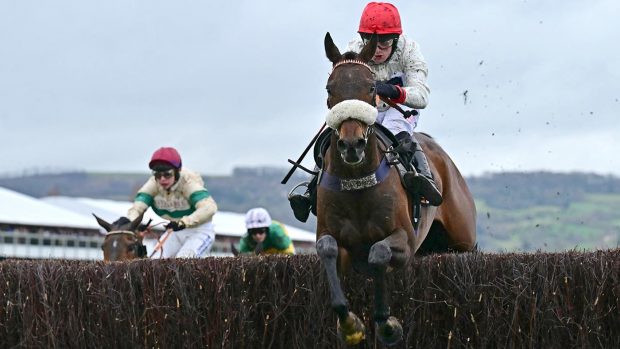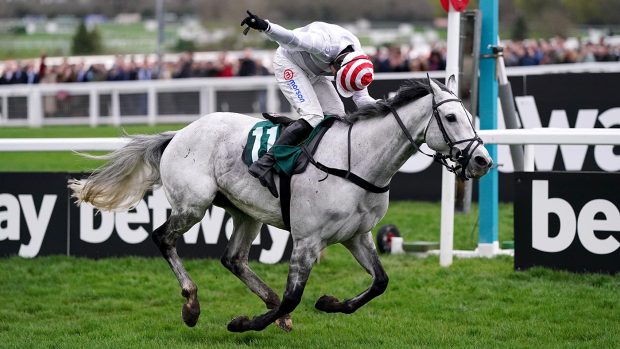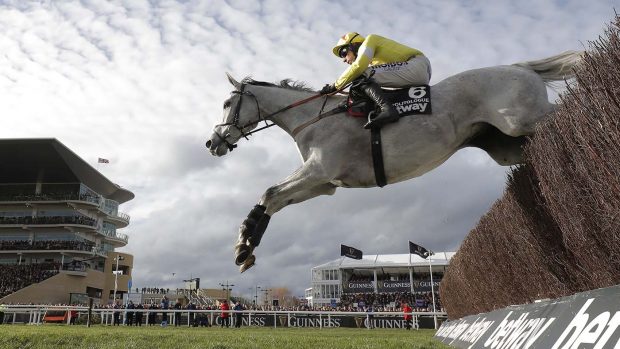Don’t know the difference between a banker and a bumper? Hat or no hat? Swot up with our guide for first time racegoers
There’s only one thing on racing fans’ radar this week (13-16 March 2018): the Cheltenham Festival.
All year National Hunt trainers have been prepping for these vital four days, which is one of the biggest occasions in the racing calendar. Closely following Cheltenham is the next biggest occasion for jumps lovers, The Grand National Festival at Aintree (12-14 April 2018).
If you’ve never been racing before, then now’s the time to break your duck.
Preparation
If you’re heading to the races for the first time it’s best to be prepared. Remember to take plenty of cash if you’re intending on having a bet, plus some bars at tracks don’t take cards. And of course at Cheltenham there’s a huge shopping village to peruse, too. There’ll be cashpoints on course but they’ll likely charge you to withdraw money.
You’ll also want to plan your transportation to (and from) the races. There will inevitably be massive queues to get in and out so it’s worth setting off early to avoid missing the first race. And you don’t want to be stranded after the day comes to an end.
If you’re going with friends it’s wise to choose a meeting point should you all get split up. Phone and internet connection at courses can be weak due to the amount of people, so just in case…
What to wear
The eternal dilemma for many, regardless of the occasion. First things first, this is National Hunt racing, not Royal Ascot. There’s no need for massive fancy hats (and certainly no fascinators) at Cheltenham or Aintree.
But that’s not to say hats are unwelcome. You’ll find a vast range on show, made from heavier, winter materials including felt, faux fur, feathers or tweed. There’s also sure to be a huge amount of flat caps and trilbys (for both men and women).
Also it’s March, not June, so you’re going to be standing out in the cold (possibly rain), for some time so it’s essential to wrap up warm. Wear a coat. No morning suits, black tie, strappy dresses are required. Nor, necessarily, is tweed. You may well be drowning in a sea of it when you arrive, but that doesn’t make it compulsory.
Fiona Johnson, wife of champion jockey Richard, always thinks carefully about what to wear racing, and even has her own hat hire company.
“When I’m planning an outfit for Cheltenham I always start with a coat and work backwards,” she tells H&H. “Although if I find a hat I love then I will often plan my outfit around that. Hats have become increasingly popular at jumps meetings over the past few years, which I think is great. I love wearing hats and I couldn’t imagine going to a big meeting without one.
“I always try to wear something that has a pop of colour or a print, too. But it also has to be warm, there is nothing worse than getting cold at the races.”
Footwear is also worth considering, you’re likely to be on your feet for a large part of the day, and will want to be able to move around easily to see the horses, so don’t wear something that will cripple you within minutes of stepping out of the car. And stilettos in soggy grass will only lead to muddy heels (and possibly becoming stuck).
What to look for in the paddock
Heading to the parade ring ahead of each race is an excellent way to get a feel of the sport. Admire the shape of the horses and look out for clues as to whether they are going to run well, ahead of parting with your hard earned cash.
“You want to find a horse that is relaxed, not jumping around or sweating up,” top showman Robert Oliver tells H&H. “They want to have a nice, free walk and a relaxed expression.
“You want a good looking animal, square and nicely put together. But mainly one that’s not getting too excited ahead of the race.”
Placing a bet
You’ve found the winner in the paddock and it’s time to place a bet on aforementioned steed.
Firstly, buy a racecard and look at age, the weight they are carrying, whether they have won before and who rides and trains them. Check also what the ground is like (soft, good to soft, good, good to firm, firm) and see what ground the horse has won on before.
Some races, like the Gold Cup, horses all carry the same weight. Other races, handicaps, they will carry varying weight depending on their past performances to make it a fairer race.
If you fancy a flutter there’s plenty of options. You can either bet on course, with the Tote, or you head down to the betting ring, where bookies will have a range of odds on offer. Finally you can bet online, too.
The lower the odds (ie 15/8, 2/1) the more expected the horse is to win. A horse with an outside chance will have higher odds (from 20/1).
“Odds can be a bit confusing for anyone new to betting, so just ask whoever is serving you if you get stuck — bookies are surprisingly helpful,” says William Hill’s Jon Ivan-Duke.
“If you’re backing something each-way, remember it’s going to cost you double. For example, a £5 each-way bet will cost you £10. That is because you are effectively betting the horse for both a ‘win’ and a ‘place’ (to come usually in the top three).
“One good rule of thumb is to look at a horse’s past form. If they’ve done well at that meeting in previous years, it shows you they enjoy the unique nature of the course and it’s the right time of year for a flutter on them.”
Like this? You might also enjoy reading these:
11 heartwarming Cheltenham Festival wins that we won’t forget in a hurry
11 gravity-defying racing recoveries
Jargon busting
Banker: horse expected to win
Bumper: a National Hunt Flat race
Chase: a race over larger fairly solid brush fences
Furlong: the distance races are measured in. One furlong is an eighth of a mile
Grade One: top level race
Handicap: different weights carried by horses based on their official rating of how good they are deemed to be
Hurdle: a race over smaller brush fences, which can be knocked down
Length: the distance a horse can win by, measured by the length of a horse
Maiden: a horse that’s never won
On the bridle: running nicely
Off the bridle: hard at work
On the nose: back a horse to win





